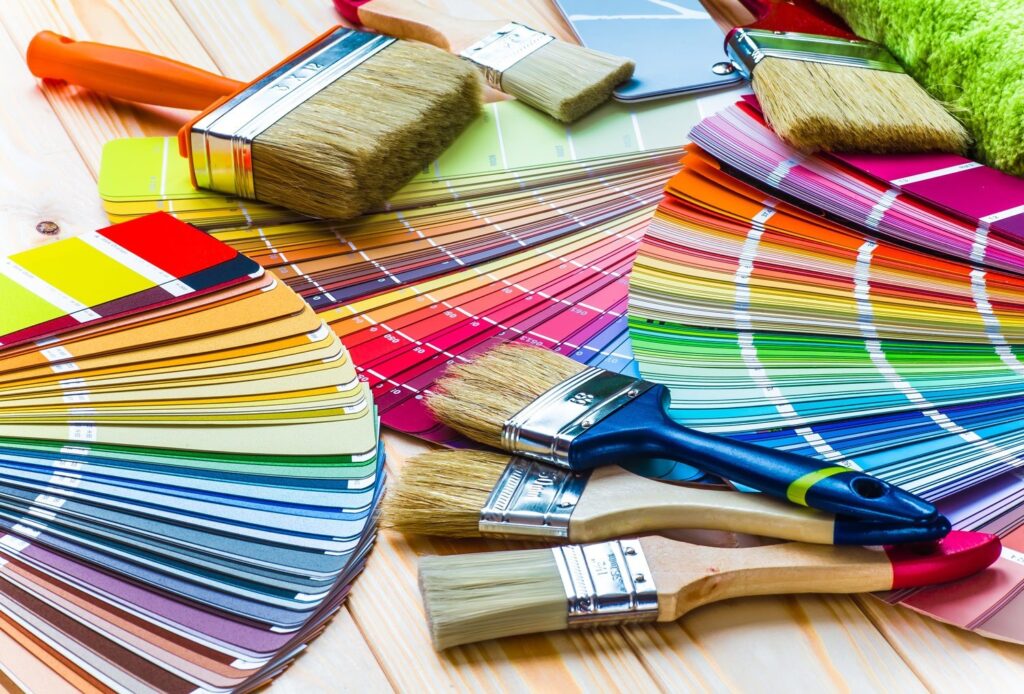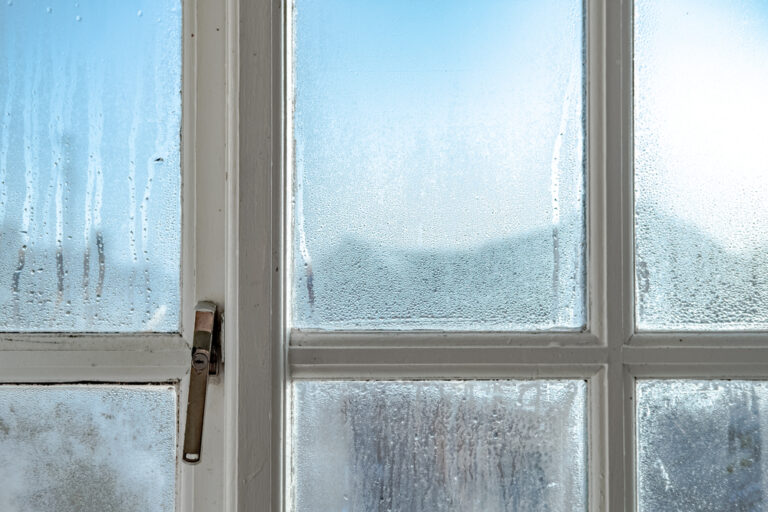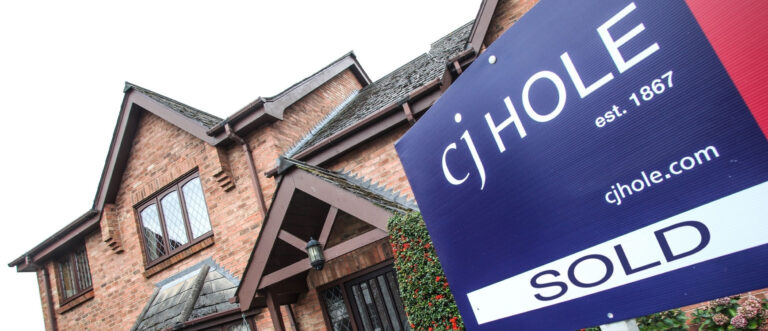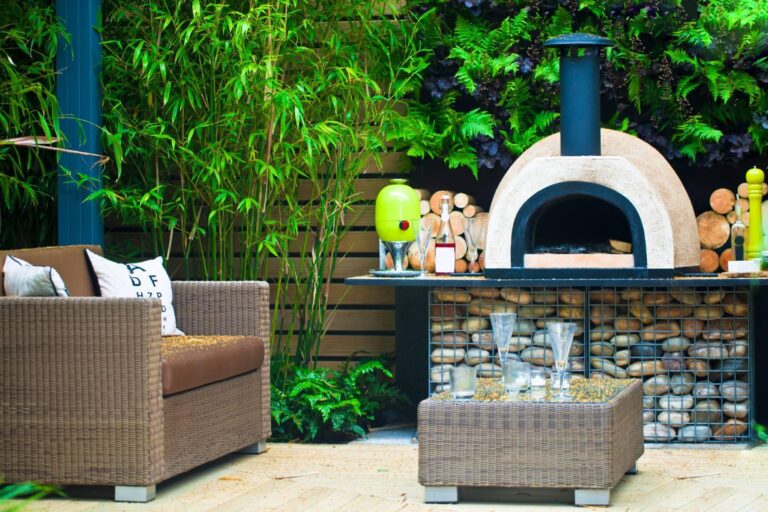One of the best (and usually easiest) ways to spruce up your home after the darkness of winter is through a fresh lick of paint.
The colour on your walls can also boost your wellbeing, making you feel calmer and happier.
But what colours are on trend and which shades work best in which rooms?
We’ve got all the answers in this guide, so you can transform your home through colour…
How to choose the right paint colour
There’s a lot to think about when it comes to choosing the right paint colours for your home.
When deciding, try to think about:
- The colour and style of your furniture
- The colours you like outside of the home
- How different colours affect your mood and how you feel
- Whether you want to highlight a feature wall or go for one colour
- How you could combine the same colour in different tones
The best bedroom paint colours
Bedrooms can be one of the most tranquil and relaxing rooms of your home, but your wall colour can influence sleep patterns and moods.
Avoid reds, which can raise energy levels, and try these colours for your bedroom:
1. Calming greens
Green can create a feeling of calmness due to its associations with nature.
A backdrop for a restful night’s sleep, deep greens are also very on trend and work extremely well when ‘colour drenching’ – where different tones of the same colour are used on walls, skirting boards, architraves, and fire surrounds, rather than standard white satin or gloss.
2. Sleepy blues
Blue is another colour that can help to create a calm and tranquil bedroom space.
Contrast dark blue walls with lighting furnishings and bedding for a dramatic look.
Or focus on lighter, oceanic blues to bring a little more of the outside in.
3. Terrific teal
Teal is another bedroom colour that is hugely on trend and a modern step away from popular dark blues.
It also works brilliantly as a feature wall pop of colour to complement a white or off-white bedroom scheme.
What colour should I paint my living room?
Modern living rooms need to be multi-functional as spaces to relax and watch television, chat with friends and family or sit back with a good book.
With those activities in mind, ‘cocooning’ has become a popular trend for living rooms, where a soothing, natural colour is used across the entire room to create a cosy haven.
Try these great colours to ‘cocoon’ your living room:
1. Natural Khaki
Grey will always be a hugely popular colour for living rooms and Khaki offers a hint of that alongside some more natural browns and greens.
This is an earthy colour that works especially well for ‘drenching’, where the satin version of the colour adorns doors, architraves and skirting boards works with flat matt finish on the walls.
2. Perfect purple
While red might be considered a little too lively for a relaxing living room space, a deep purple offers a hint of fire without going overboard.
Pinks are on trend, too, but purple offers a deeper, darker option – especially for period homes or as a colour for a panelled feature wall.
3. Brilliant beige
While beige or shades of magnolia might seem a little basic, these are colours that bring the best out of vibrant seating or upcycled furniture.
Neutral doesn’t always mean boring and cool beige shades will work in any living room in any home.
What colour to paint your hallway
Warm, rich tones can work brilliantly in hallways.
Think about it like this – the time you spend in your hallway will usually be just before you prepare to go out or just after you’ve arrived home.
During the winter months in particular, saturated colours can create a real feeling of warmth when it’s anything but outside.
Consider these luxurious colours for your hallway:
1. Cherry red
Deep and warming, a cherry red hallway is the perfect space to come home to during autumn and winter.
Cherry, too, can be paired with other colours like sage and other strong greens for a more dramatic scheme.
2. Plum tones
Like cherry, plum feels natural yet classy and is another great colour to use for a dramatic statement hallway.
To offset flat matt plum walls, opt for full gloss brilliant white doors, surrounds and skirting boards.
3. Classic grey
While living rooms have moved away from grey in favour of deep blues and greens in recent years, grey isn’t going far.
It works superbly as a hallway colour as it matches with a variety of hard wood or laminate floor tones and can help create a feeling of space in narrower hallways, particularly in Victorian properties.
The best kitchen paint colours
When thinking about a colour for your kitchen walls, it’s all about contrast and creating drama.
If you’ve got dark, bold cabinets or a richly coloured island, contrast those colours with crisp whites or pastel tones on your walls.
White cabinetry, meanwhile, pairs beautifully with rich blues and greens.
Try these amazing colours on your kitchen walls:
1. The rise of greige
It’s not beige and it’s not grey – but greige offers the best of what those colours can offer your kitchen.
Grey can feel cold in kitchens, but because greige brings hints of yellow, green and brown into the mix, it adds much more warmth to the space.
2. Soft yellows
Whether your cabinets are modern with sheen, or wooden with character, yellow is a colour that works well with anything.
For wooden cabinets in particular, it highlights the warming tones and grains in the wood and is a great colour to see first thing in the morning when you go down for breakfast.
3. Smoky black
Best saved for a feature wall rather than an entire kitchen, black is a brave choice but one that will make a real statement.
Paired with crisp white cabinets and counters, blacks in a charcoal tone can work brilliantly for kitchen feature walls – particularly with shaker-style panelling.
Great bathroom colours for your walls
Softer, pastel style colours are best for bathrooms, which like your bedroom, should be a calming, relaxing space for you to kick back in.
Try these beautiful colours for a tranquil bathroom:
1. Watery blues
While dark blues work well for bedrooms and living spaces, the best approach for your bathroom is to dial back the tone.
Watery blues are just the right level of intensity for a bathroom or small WC and look sophisticated and modern without being overbearing.
2. Go-to white
White will always be a great colour for bathrooms and works equally well alongside a crisp white suite or something with a pop of colour.
Paired with darker cabinets and fittings, off-whites can feel clean and crisp without looking sterile.
3. Natural stone tones
Light browns with hints of grey and yellow can result in a natural colour scheme for your bathroom.
These colours work especially well with marbled bathroom suites, where natural materials are very much the order of the day.





